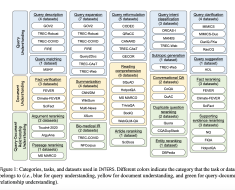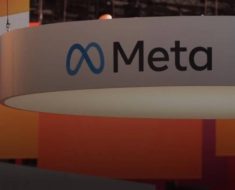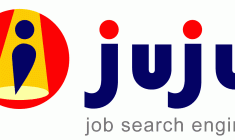This section delves into the essential components and methodologies shaping the landscape of LLMs. From exploring the intricacies of core models and retrieval-augmented generation techniques to dissecting the practical applications facilitated by platforms like Hugging Face Transformers, this segment unveils key concepts.
Additionally, this section navigates through the significance of vector databases, the artistry of prompt design and engineering, and the orchestration and agents responsible for the functionality of LLMs. The discussion extends to the realm of local LLMs (LLLMs) and innovative Low-Rank Adaptation (LoRA) techniques, providing a comprehensive overview of the foundational elements that underpin the effectiveness and versatility of contemporary language models.
The Foundation Model and Retrieval-Augmented Generation (RAG)
The foundation model refers to the pre-trained language model that serves as the basis for further adjustments or customization. These models are pre-trained on diverse and extensive datasets to understand the nuances of language and are then fine-tuned for specific tasks or applications.
Figure 2: Foundation model

Retrieval-augmented generation (RAG) is a specific approach to natural language processing that combines the strengths of both retrieval models and generative models. In RAG, a retriever is used to extract relevant information from a large database or knowledge base, and this information is then used by a generative model to create responses or content. This approach aims to enhance the generation process by incorporating context or information retrieved from external sources.
RAG is particularly useful in scenarios where access to a vast amount of external knowledge is beneficial for generating more accurate and contextually relevant responses. This approach has applications in tasks such as question answering, content creation, and dialogue systems.
Figure 3: Retrieval-augmented generation (RAG)

Hugging Face Transformers
Hugging Face Transformers [8, 11] emerges as an open-source deep learning framework developed by Hugging Face, offering a versatile toolkit for machine learning enthusiasts. This framework equips users with APIs and utilities for accessing cutting-edge pre-trained models and optimizing their performance through fine-tuning. Supporting a spectrum of tasks across various modalities, including natural language processing, computer vision, audio analysis, and multi-modal applications, Hugging Face Transformers simplify the process of downloading and training state-of-the-art pre-trained models.
Vector Databases
A vector database refers to a database designed to store and retrieve embeddings within a high-dimensional space. In this context, vectors serve as numerical representations of a dataset’s features or attributes. Utilizing algorithms that compute distance or similarity between vectors in this high-dimensional space, vector databases excel in swiftly and efficiently retrieving data with similarities.
Unlike conventional scalar-based databases that organize data in rows or columns, relying on exact matching or keyword-based search methods, vector databases operate differently. They leverage techniques like Approximate Nearest Neighbors (ANN) to rapidly search and compare a substantial collection of vectors within an extremely short timeframe.
Table 3: Advantages of vector databases for LLMs
| Key Advantages | Tasks Performed |
|---|---|
|
Determining context |
Vector embeddings enable LLMs to discern context, providing a nuanced understanding when analyzing specific words. |
|
Detecting patterns |
The embeddings generated encapsulate diverse aspects of the data, empowering AI models to discern intricate relationships, identify patterns, and unveil hidden structures. |
|
Supporting a wide range of search options |
Vector databases effectively address the challenge of accommodating diverse search options across a complex information source with multiple attributes and use cases. |
Some of the leading open-source vector databases are Chroma [10,17], Milvus [13], and Weaviate [23].
Prompt Design and Engineering
Prompt engineering [9] involves the creation and refinement of text prompts with the aim of guiding language models to produce desired outputs. On the other hand, prompt design is the process of crafting prompts specifically to elicit desired responses from language models.
Table 4: Key prompting techniques
| Prompting Techniques | Modus operandi |
|---|---|
|
Zero-shot prompting |
|
|
Few-shot prompting |
|
|
Chain-of-thought (CoT) prompting |
|
|
Contextual prompts [3] |
|
Orchestration and Agents
Orchestration frameworks play a crucial role in constructing AI-driven applications based on enterprise data. They prove invaluable in eliminating the necessity for retraining foundational models, surmounting token limits, establishing connections to data sources, and minimizing the inclusion of boilerplate code. These frameworks typically offer connectors catering to a diverse array of data sources, ranging from databases to cloud storage and APIs, facilitating the seamless integration of data pipelines with the required sources.
In the development of applications involving LLMs, orchestration and agents play integral roles in managing the complexity of language processing, ensuring coordinated execution, and enhancing the overall efficiency of the system.
Table 5: Roles of orchestration and agents
| Key Capabilities | Detailed Role | |
|---|---|---|
|
Orchestration |
Workflow management |
Oversees the intricate workflow of LLMs, coordinating tasks such as text analysis, language generation, and understanding to ensure a seamless and cohesive operation. |
|
Resource allocation |
Optimizes the allocation of computational resources for tasks like training and inference, balancing the demands of large-scale language processing within the application. |
|
|
Integration with other services |
Facilitates the integration of language processing capabilities with other components, services, or modules. |
|
|
Agents |
Autonomous text processing |
Handle specific text-related tasks within the application, such as summarization, sentiment analysis, or entity recognition, leveraging the capabilities of LLMs. |
|
Adaptive language generation |
Generate contextually relevant and coherent language, adapting to user inputs or dynamically changing requirements. |
|
|
Dialogue management |
Manage the flow of dialogue, interpret user intent, and generate appropriate responses, contributing to a more natural and engaging user experience. |
|
|
Knowledge retrieval and integration |
Employ LLMs for knowledge retrieval, extracting relevant information from vast datasets or external sources and integrating it seamlessly into the application. |
The synergy between orchestration and agents in the context of LLMs ensures that language-related tasks are efficiently orchestrated and that intelligent agents, powered by these models, can autonomously contribute to various aspects of application development. This collaboration enhances the linguistic capabilities of applications, making them more adaptive, responsive, and effective in handling natural language interactions and processing tasks.
AutoGen [5, 15] stands out as an open-source framework empowering developers to construct LLM applications through the collaboration of multiple agents capable of conversing and collaborating to achieve tasks. The agents within AutoGen are not only customizable and conversable but also adaptable to various modes that incorporate a mix of LLMs, human inputs, and tools. This framework enables developers to define agent interaction behaviors with flexibility, allowing the utilization of both natural language and computer code to program dynamic conversation patterns tailored to different applications. As a versatile infrastructure, AutoGen serves as a foundation for building diverse applications, accommodating varying complexities and LLM capacities.
Opting for AutoGen is more suitable when dealing with applications requiring code generation, such as code completion and code refactoring tools. On the other hand, LangChain proves to be a superior choice for applications focused on executing general-purpose Natural Language Processing (NLP) tasks, such as question answering and text summarization.
Local LLMs (LLLMs)
A local LLM (LLLM), which runs on a personal computer or server, offers the advantage of independence from cloud services along with enhanced data privacy and security. By employing a local LLM, users ensure that their data remains confined to their own device, eliminating the need for external data transfers to cloud services and bolstering privacy measures. For instance, GPT4All [19] establishes an environment for the training and deployment of robust and tailored LLMs, designed to operate efficiently on consumer-grade CPUs in a local setting.
Low-Rank Adaptation (LoRA)
Low-rank adaptation (LoRA) [1,20] is used for the streamlined training of personalized LLMs. The pre-trained model weights remain fixed, while trainable rank decomposition matrices are introduced into each layer of the transformer architecture. This innovative approach significantly diminishes the count of trainable parameters for subsequent tasks. LoRA has the capability to decrease the number of trainable parameters by a factor of 10,000 and reduces the GPU memory requirement by threefold.




